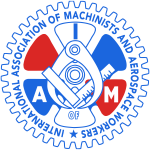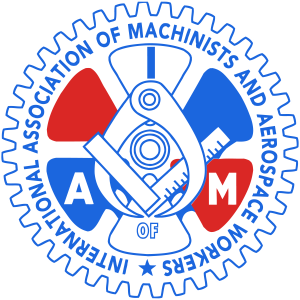The National Association of Retired and Veteran Railway Employees has long protected the railroad pension fund from proposed presidential and congressional amendments to the Railroad Retirement Act that would raid the fund to support budget proposals.
“NARVRE is the only federally chartered railroad retire association having for its sole purpose the protection, promotion and preservation of our railroad retirement annuity,” NARVRE Area 6 Director Roger Barr said.
However, members of the NARVRE organization are aging, and with few young members joining, the future of the organization could be threatened.
For example, the Parsons NARVRE group, once 1,000 members strong when the Katy Railroad was in operation, has dwindled to 110 members, treasurer Lois Shrum said.
Former national NARVRE president for 16 years, August Westphal, spoke to NARVRE members Monday about the importance of raising awareness in young railroad workers about the potential future threat to their financial security.
The U.S. Railroad Retirement Board, an independent agency in the executive branch, was created in 1935 to administer retirement and survivor benefits to U.S. railroad workers and their families. These benefit payments are financed by payroll taxes paid by railroad employers and their employees, similar to what other U.S. workers pay into Social Security, except railroad workers pay more into their benefit fund.
Railroad retirement taxes are figured on a two-tier basis. Tier I payroll taxes are figured at the same rate as Social Security taxes. In addition, Westphal said, tier II taxes are paid by employees and employers to finance railroad retirement benefit payments above Social Security levels.
“In the early 1980s, when Reagan was president, he was the first to want to put all railroad employees paying into tier I into Social Security. We fought against it, and it failed in Congress,” Westphal said. “Then the senior George Bush tried it and then Clinton tried it. They both failed.”
“It was not until 2001 that for the first time the law provided that we could invest our surplus money,” Westphal said.
Beginning in 2002, taxes paid completely by railroad workers into the fund above outgoing benefit payments or administrative expenses were invested by the National Railroad Retirement Investment Trust.
“That first year we increased our investments by $7 billion,” Westphal said. “We were up as high as $30 billion, but like everyone else, in 2008 our investments went down. We have $25.7 billion now. Those investments have created a very sound, solid retirement system for railroad workers. We have paid in more to have those retirement benefits and we believe we should be able to keep them.”
The stability of the fund is its precise appeal to those in Congress looking for means to bolster the financially ailing Social Security system, he said.
Strong membership in NARVRE means a strong voice when railroad workers want to protect the benefits they have paid for.
“United Airlines just took their pensions from their pilots. Over 8,000 pension plans have just been abolished across the U.S. That’s why we are concerned about AMTRAK. There are more than 20,000 people working in AMTRAK that pay into our railroad retirement fund. We want to be sure they keep their jobs. There are some congressmen who want to get rid of AMTRAK. They want to get rid of sleeping cars on coast-to-coast trains and they want to get rid of the dining car service. We need to support AMTRAK as long as we can,” Westphal said. “That’s why we have these clubs, to keep all that going for all railroad employees, no matter their craft, machinist, switchman, engineer, whatever position. They are all eligible to join because they are all under the same pension plan.”
Younger people should not sit back and say “nothing will happen to me,” he said.
Young railroad workers waiting until retirement to join NARVRE could find by that time NARVRE no longer exists, and neither do their pensions. NARVRE needs young workers to step up and be the watch dogs for the railroad retirement system, and make sure everyone is treated fairly, Westphal said. “We are the grass roots.”
Although younger railroad employees may not have time to attend NARVRE meetings because they are working, membership entitles them to receive the monthly newsletter, keeping them apprised of what is going on.
The Parsons club meets once a month on the second Monday, except in the summer. All active railroad workers and retired railroad employees and their spouses are eligible to become a member.
To learn more, call Shrum at 423-3536 or visit that national website at https://www.narvre.info/.
“We would really like to have active railroad employees involved because we are working to protect their pensions, too,” Shrum said. “There is a lot of information we provide that employees wouldn’t know unless they received the newsletter or came to the meetings.”





